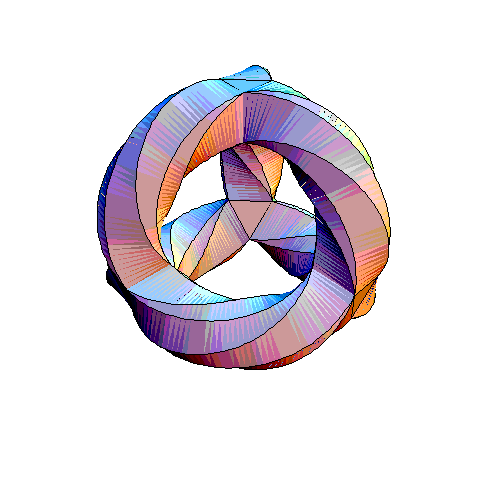




     |
Loading
|
The Scientific Revolution
Ideas do not have to be correct
in order to be good;
its only necessary that, when they do fail (and they will), they do so in an interesting way.
If I have seen further, it is by standing on the shoulders of giants. - Issac Newton
Newton's Brilliant MistakeGottfried Leibniz had a problem. He wanted, but could not seem to find, a good explanation of how and why things moved. But Leibniz, the (independent) co-inventor of calculus, was no dummy. He hypothesized the world was composed of the notion of objects called "monads." He realized that if an object A influences an object B, then logically object B will influence object A. There is a logical paradox here, since each object influences each other, how does the influence come to equilibrium? Moreover, the question is how does one compute the combined influence. He just couldn't not seem to get started in the analysis [Smolin 97]. Leibniz, when coming to England, became excited and disappointed, for he had found that Newton had formulated a method, based on the concept of "mass," for proving that planets had a gravitational "force" which was proportional to the mass as the inverse of the square of the distance to the sun. Newton had accomplished what nobody had done before, generated a law of nature by mathematical construction.The Pythagorean ... having been brought up in the study
of mathematics, thought that things are numbers
... and that the whole cosmos is a scale and a number. --Aristotle Hypothesis non fingo - Newton "Hypothesis non fingo" meaning "I do not feign a hypothesis" is
Newton's response when asked about what constitutes space. Being
a Rational, he realized that he did not want to, or care to, speculate
beyond what he established by meticulous and precise reasoning. Despite
Newton's scientific humbleness and modesty: his statement is not
exactly
correct. First, he assumed an absolute space, and later Einstein
corrected that. Second, his model of the world was constituted by
"particles", that move continuously in space. Dynamics is
the term for Newton's model, which is the foundation of modern physics.
Part of this model is a form of hypothesis, but much more insidious and
subtle than his first assumption. So subtle, we are grappling with
the problem today more than 300 years later. What Newton assumed,
was essentially a form of reductionism, akin to Pythagoras and his followers,
essentially using Descartes' machine analogy in a precise manner.
The problem, mostly propagated by Newton's followers, is to assume that
the machine analogy is the only form of science. And we are all inheritor's
of Newton's brilliant reduction: gladly so (except
enemies
of the future). For Issac Newton did not see Liebniz's problem.
He had other fish to fry, and he had an interesting method and result that
he had obtained when playing around mathematically with the binomial expansion
using negative or fractional powers. This interesting method, calculus,
makes an interesting assumption: that is, the world is continuous.
Newton applied his new method to the real world, set out in a large degree
in Principia Mathematica, and the rest is history. Laplace's clockwork
universe became a reality. Well, almost.
Some limits cannot be computed, but only inferred.
Every school boy knows that the world is made of atoms.
Actually, according to some modern physicists, they think that the world is made of "strings" -- something akin to Newton's particles, a modern day form of Democritus' atoms. But what is makes a string? Back to Leibniz's dilemma in modern form. Newton, in assuming the notion of a finite "particle" that can exhibit continuous motion, he had assumed the world is discrete and continuous at the same time. The string theorists do the same. Why is a "string," finite (discrete) and the background, infinite (continuous)? It is assumed. That assumption has placed an unnecessary limitation on science. We cannot blame Newton for his mistake for he opened the world to the benefits of rigorous scientific reasoning using mathematics, but it is time to examine the Newtonian paradigm and find methods that do not make this limiting assumption. |